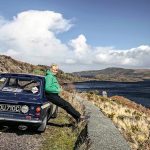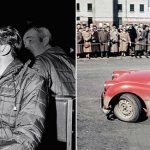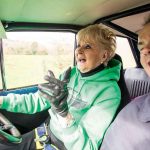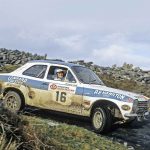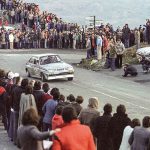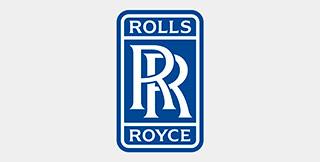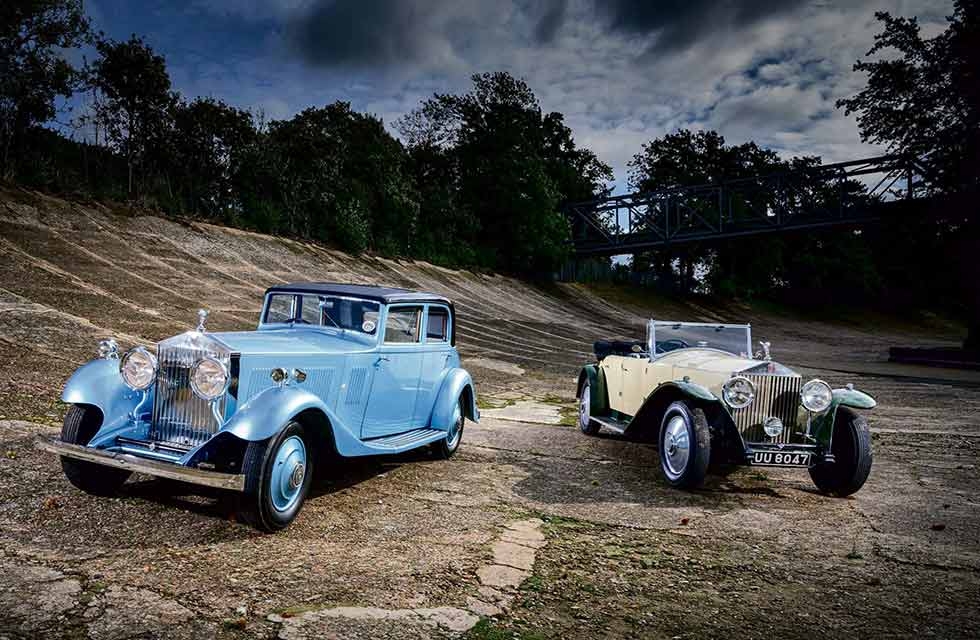
These two Rolls-Royces have connections with a Land Speed Record-breaker, Royalty and Brooklands. Now they return to their old haunt to reveal their spirit. Words Robert Coucher. Photography Paul Harmer.
EXCLUSIVE! ROLLS-ROYCE PHANTOMS FIT FOR A KING – AND A SPEED KING
A PHANTOM PRESENCE
Rolls-Royce Phantom IIs With connections to a Land Speed Record-breaker, Royalty and Brooklands
Conviction and self-confidence are admirable traits as long as they don’t slide into arrogance and hubris. But it was hard to be humble when your new motor car had just been lauded by The Autocar as ‘The Best Car in the World’.
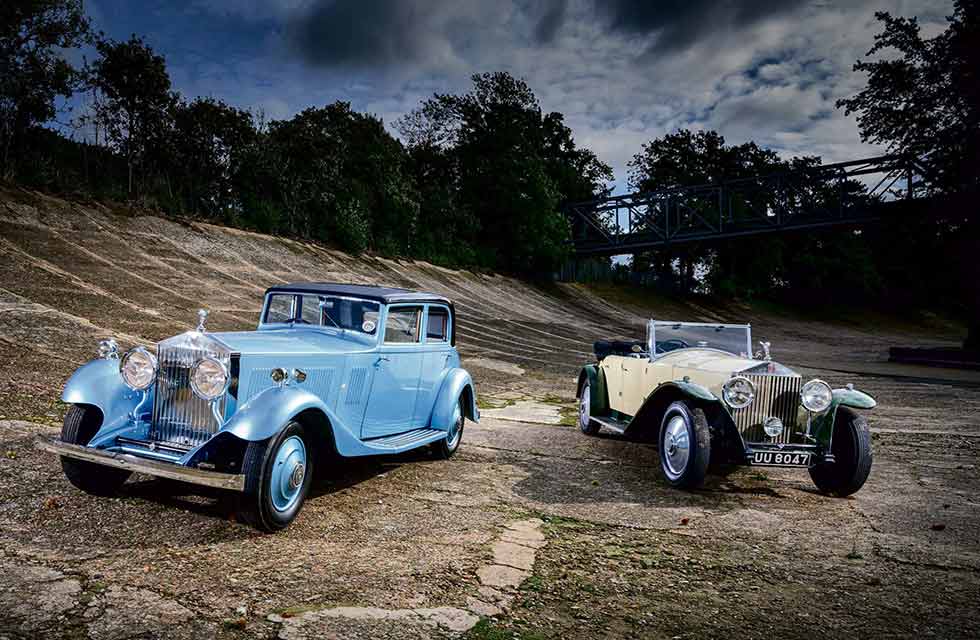
The first motor car badged ‘Rolls-Royce’ was the Rolls- Royce 10hp shown at the Paris Salon in 1904, sold by Charles Rolls and engineered by Henry Royce. Their new company, Rolls-Royce Limited, was founded in 1906 and commercial manager Claude Johnson persuaded the directors to concentrate on just one car. That was the upcoming 40/50hp model which offered an ‘adequate’ 7.4-litre in-line six-cylinder engine.
‘The metallic finish was achieved by introducing finely ground herring scales into the paint lacquer’
Following that accolade from The Autocar, it soon took on the sobriquet ‘Silver Ghost’, after the famous silver Royce demonstrator, registered AX 201. It probably was the best car in the world at the time. And maybe that’s why Rolls-Royce continued with its confident notion that manufacturing just one model, the 40/50hp, for 20 years was a viable sales strategy. From 1906 until 1926, Rolls-Royce sold 7874 examples, including 1701 made in the US at its Springfield factory. That’s quite a lot of Ghosts.
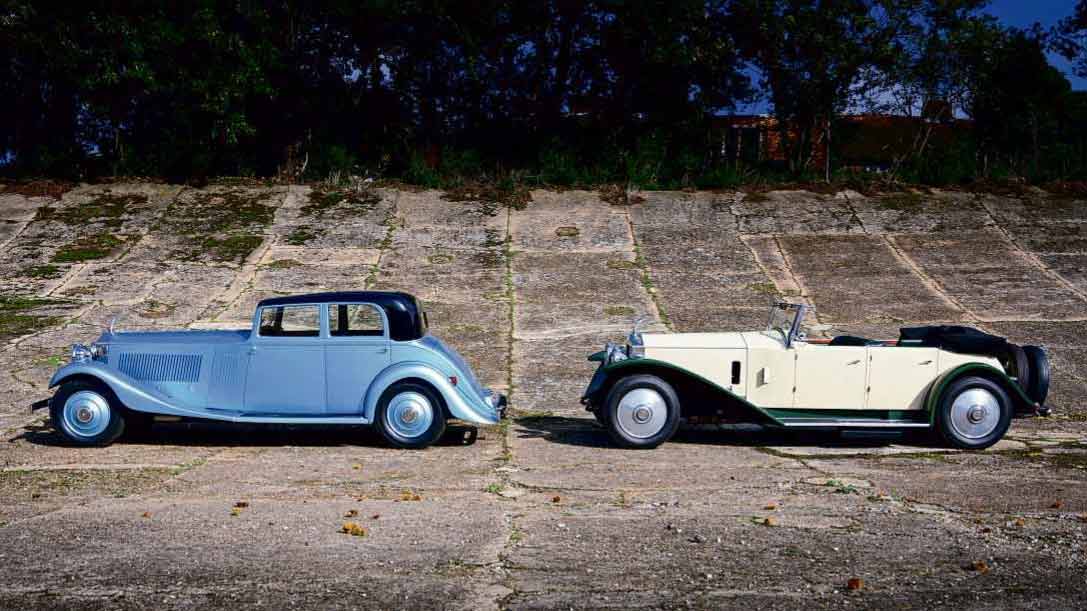
Famously, factory demonstrator AX 201, chassis number 60551 and the original Silver Ghost, was entered in the 1907 Scottish Reliability Trial. It completed the required 15,000 miles and set world records, cementing the Rolls-Royce reputation for uncompromising quality and reliability. Then, in 1911, chief test driver Ernest W Hives made the London-to-Edinburgh run in a Ghost using top gear only, and orders continued to pour in. The Silver Ghost was not designed as a sports car but some of its enthusiastic owners disagreed. One James Radley privately entered his Ghost in the 1914 Austrian Alpine Trial, only to find that its three-speed gearbox prevented him negotiating the steep Katschberg Pass. No matter: Rolls-Royce prepared four cars for the 1914 event, fitted with four-speed gearboxes and more powerful engines, and these team cars won six awards, including the prestigious Archduke Leopold Cup.
Inspired by this success, the factory began producing cars of similar specification for customers. Officially these were ‘Continental’ models but most knew them by the more evocative ‘Alpine Eagle’ nomenclature. During World War One, some Ghosts were converted into armoured cars to be used by tabloid hero Lawrence of Arabia, adding further to the motor car’s mystique.
Not until 1925 did Rolls-Royce deem its Silver Ghost to need updating. Sticking with the company’s now popular ethereal theme, the ‘New Phantom’ was launched with an improved, larger-capacity 7.6-litre engine in the Silver Ghost chassis. Rolls-Royce still purported not to build sporting motor cars, of course, but its customers were enjoying the extra performance. This really came together with the all-new 40/50hp of 1929 – the Phantom II, last of the 40/50s, two of which you see here. ‘The best Rolls-Royce yet produced,’ wrote Land Speed Recordholder Captain Sir Malcolm Campbell. He should know, because he owned the metallic-blue one.
With its refined crossflow OHV 7.6-litre engine, its stronger and lower chassis with stiffer semi-elliptic springs all round and its four-wheel servo-assisted brakes, the Phantom II became a well-resolved drivers’ car. So much so, indeed, that Rolls-Royce additionally offered a ‘Continental’ version, Royce-speak for ‘sports car’, with a shorter 144-inch wheelbase and yet-stiffer five-leaf rear springs. Rolls-Royce sold 281 Continentals, including 125 left-hand-drive versions, out of a total production of 1281 Phantom II chassis of all types.
These two elegant Rolls-Royce Phantom IIs are at the old Brooklands circuit on 9 October 2019 for very particular reasons. The Brooklands Museum has given us permission to drive them on the hallowed banking because both have been here before and in special circumstances.
The 1929 Barker-bodied open torpedo Tourer, finished in its original cream and olive green livery, is chassis number 3WJ, engine number VK35, registration UU 8047. It’s owned by Alan Swann, his brother-in-law Paul Deschamps looking after its mechanical needs, and they have come armed with an old black-and-white photograph that shows the Phantom on the banking. The caption states: ‘A Rolls-Royce on the racetrack at Brooklands, Surrey, 9th October 1929.’ Exactly 90 years earlier.
Edward VIII, Prince of Wales and King of England before his abdication in 1936, had ties to Rolls-Royce. During the days of the Great Depression in the 1930s he undertook various tours around the country to boost morale. The Prince, as he was then, had requested an open tourer in which to conduct these tours, so Rolls-Royce provided the very same Barker-bodied Phantom II that has just joined us. It comes with an old Pathé film clip from 1930, its footage identified as: ‘Middlesbrough, Sunderland, Hartlepool. Cheers all the way! Tumultuous enthusiasm from vast crowds everywhere pays fit tribute to popularity of the Prince of Wales during crowded 2 days tour of the North of East.’ The Phantom and its registration number UU 8047 can be clearly identified, with the Prince as one of the passengers in the rear seat.
Not a lot is known about the Phantom II Tourer’s life after that. The build sheets show it was delivered with open touring coachwork by Barker fitted to its long 150- inch chassis. It was painted in this same olive green and cream colour scheme with a green leather interior and nickel finishings. At some point it must have been rebodied because it now wears ‘James E Pearce Coachbuilders’ coach plates. The coachwork looks exactly like the Barker original apart from a small boot lid that has been let into the rear panel. Large, elegant and imposing, the Tourer has just the sort of regal looks fit for a prince.
The rear compartment has vast legroom and what looks like an overstuffed green leather Chesterfield sofa squeezed into the space. It’s more akin to a motor-yacht deck than a motor-car interior.
And the 1933 Rolls-Royce Phantom II Continental saloon? Sir Malcolm Campbell bought it new on 28 March 1933. Chassis number 140 MY, with engine number GF 45 and original registration number AGO 1, was sold as a complete car with Barker coachwork. As a Continental, it was laid down on the short 144-inch chassis with a lowered floor, a low-rake steering column, a wider track, a higher rear-axle ratio, André Hartford telefriction dampers and stiffer rear springs. The engine also featured higher compression, a high-lift camshaft and a bigger ‘semi-expanding’ carburettor.
Malcolm Campbell was no shrinking violet, so he ordered his Phantom II in this striking Saxe Blue. In those days the metallic finish was achieved by introducing finely-ground herring scales into the paint lacquer. Campbell ordered all sorts of options, including a twotone klaxon and a modified exhaust that can be switched to ‘open’ mode. The interior is trimmed in blue leather as per original, and the saloon coachwork features a sliding sunroof. As with all his cars, Campbell had a St Christopher badge affixed to the dashboard. It’s still there.
This was turning out to be a rather special day at the Brooklands Museum and the arrival of Don Wales duly added to the sense of occasion. Don is Sir Malcolm Campbell’s grandson and the nephew of Donald Campbell. He holds a World Land Speed Record, two American National Records, a Guinness World Record and has broken eight UK Land Speed Records with Bluebird Electric. His ambition is to be the first to break the 400mph mark in an electric car. Needless to say, he enjoyed seeing his grandfather’s Phantom again.
Malcolm Campbell built his first shed at Brooklands in 1926 and extended it in 1931. The building that survives today was used by him as an office, workshop and showroom until around 1935. It was here that his famous Blue Bird racing and record-breaking cars were kept and maintained for his many races on the banked circuit.
There’s little doubt that Campbell used this Phantom II regularly to get here in the 1930s, so current owner Jason Hunt is very pleased to have it back at Brooklands. The Campbell Phantom’s history tells us that it went to America, ending up in Florida, where its then-owner embarked on its restoration but passed away before it could be completed. The Royce was then shipped back to the UK and underwent a full mechanical and coachwork rebuild at marque specialists Kenworthy Engineering near Bishops Stortford, Herts. The list of restoration work is very long and the costs are eye-watering, but the Continental is once again in pristine condition.
Driving a Rolls-Royce Phantom II on Brooklands’ near-sacred ground is always going to be special, but the two cars feel quite different. The early ’29 Barker Tourer is clearly engineered to be an elegant and comfortable charabanc, with marvellous 360-degree vision for its lucky passengers, who have ample room to sprawl about in the back seats. Thanks to the long wheelbase, the front compartment is also very roomy. The stout-looking steering wheel’s central boss houses levers for the mixture, hand throttle and advance/retard. The gearshift is on the right, seemingly designed to shoot up your trouser leg, but at least it has synchromesh on third and top gear with a lock-out button on the top to guard against accidental selection of reverse.
These Royces run on both magneto and coils, so starting involves flipping all the right chrome levers. There’s nothing so common as a key. The starter motor is inaudible with no discernible cranking sound: one second the Royce is off, the next second, magically, it is running. But you have to listen very carefully; the engine is so quiet and silky in its power delivery that it’s hard to tell it has actually started.
The gearshift is very mechanical, and you can tell large gears are meshing, but it is oiled and refined and beautiful in action, unlike some other ‘British racing lorries’ of the time. The steering immediately lightens up once the car is moving, and remains accurate and smooth. The idea is to get the large, but actually quite narrow, motor car into top gear as soon as possible, then rely on the very powerful servo-assisted brakes to shave off speed if required. This is no shopping car, though; your under-butler would be much happier in a little Austin 7 for such domestic chores.
Beyond the royal duties UU 8047 was pressed into with the Prince of Wales, it would be the perfect family carriage for the beach house on the Devon coast. It would always get you back in time for cocktails overlooking the bay. As you would expect, the Continental saloon has a more sporting attitude. Many of Campbell’s road cars were painted in a blue similar to that of his recordbreakers, but this peacock hue is particularly retinasearing.
The roofline is rakishly low, adding to the sense of high-speed capability, and the roof’s black paint and the elegant wheel covers keep dignity intact. The interior is cosier than the longer Tourer’s but it still has room for four adults. Of this car, Malcolm Campbell wrote: ‘On top gear… the extra power now available is even more apparent; yet it still retains that silkiness and smooth running that is a feature of the Rolls-Royce engine… I did find that a speed of 70mph is now easily reached in third gear… I believe that this new Rolls-Royce will reach a speed of well over 90mph with consummate ease.’
I come away impressed by these Phantoms. They are so beautifully constructed, so silky and gentle in operation; fast but always so silent in motion. Unless, of course, you pull Campbell’s floor-mounted ‘open’ exhaust lever. But then, he always did have the need for ultimate speed.
From top: Sir Malcolm Campbell’s cars always carried a St Christopher badge, in blue of course; Continental’s enhanced engine has higher compression, a racier camshaft and a ‘semi-expanding’ carburettor; Campbell’s grandson Don Wales is a record-breaker himself. This page and opposite Long-chassis Tourer shows off its leather sofas and ample accommodation; enormous straight-six features advanced crossflow cylinder head; torch is a neat accessory; Tourer heads along the banking in a direction not travelled in 1929; Continental’s low-line cabin has a sporting air; so does its rakish blue bodywork. Top and above: The Barker-bodied Phantom II Tourer, hood up, storms the Brooklands banking exactly 90 years ago to the day; the Prince of Wales, to become (briefly) Edward VIII, on tour in the Phantom a year later.
Thanks To owners Alan Swann and Jason Hunt, and to the Brooklands Museum for allowing these significant Rolls-Royces to return to the banking. See www. brooklandsmuseum.com.
1929 Rolls-Royce Phantom II Tourer and 1933 Phantom II Continental
Engine 7668cc OHV straight-six, twin-plug crossflow head, magneto and coil ignition, expanding carburettor on Continental
Power Adequate (more adequate on Continental at around 120bhp)
Transmission Four-speed manual with synchromesh on third and top gear
Steering Cam and peg
Suspension Beam axles front and rear, semi-elliptic leaf springs (five leaves at rear of Continental)
Brakes Drums, servo-assisted on front wheels
Weight Approx 2000kg, depending on coachwork
Top speed 90mph
0-60mph Don’t be vulgar

